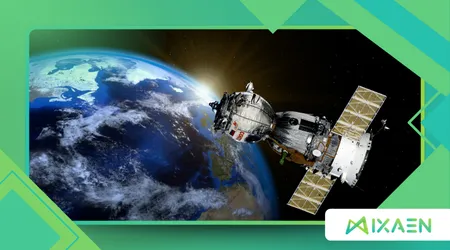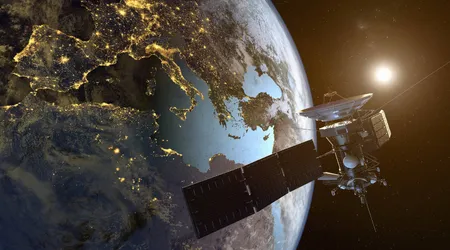The Role of Espionage Satellites in the Early Space Age

The Space Age, often celebrated for its moon shots and scientific discovery, had a far more pragmatic and tense origin. Beneath the public fanfare of exploration lay a secret, high-stakes contest for intelligence.
Anúncios
The Role of Espionage Satellites in the Early Space Age was absolutely foundational, fundamentally shifting global power dynamics.
These orbiting spies were not just reconnaissance tools; they were critical instruments of deterrence, offering the first true, verifiable glimpse behind the Iron Curtain.
This detailed examination dissects the covert technological leap that gave the United States and, later, the Soviet Union, an unprecedented strategic advantage.
We will explore how early photographic and electronic intelligence systems drastically reduced uncertainty about the nuclear capabilities of adversaries. Their success ultimately created the surveillance infrastructure we rely on today.
Anúncios
Why Did Early Space Espionage Become Necessary?
Before the deployment of satellites, intelligence gathering on a rival superpower was dangerous, fragmented, and often unreliable. The Cold War environment demanded a guaranteed method of verification.
What Was the “Missile Gap” and How Did Satellites Solve It?
In the late 1950s, US officials feared a massive Soviet superiority in Intercontinental Ballistic Missiles (ICBMs), creating the “missile gap” panic. Ground intelligence was sparse and high-altitude spy planes (like the U-2) were vulnerable.
The solution was space. An orbiting satellite could repeatedly fly over denied territory, offering systematic, high-resolution documentation of Soviet military infrastructure. The primary goal was to verify the true number and location of Soviet ICBM sites, proving the actual Role of Espionage Satellites in the Early Space Age.
++ Could We Have Gone to Mars Instead of the Moon in the 1960s?
How Did Open Skies Principles Enable Secret Missions?
The successful launch of Sputnik in 1957 established the international principle that space was free for overflight. Unlike airspace, where violation means war, there were no legal limits on orbits.
The US cleverly leveraged this open-skies principle for intelligence gathering, normalizing the presence of satellites overhead. This tacit acceptance became crucial for the continued Role of Espionage Satellites in the Early Space Age, shielding reconnaissance missions from direct attack.

The Pioneers: America’s CORONA Program
The United States’ CORONA program, operating under the guise of scientific research, was the first successful, long-running photographic reconnaissance mission, operational from 1960 to 1972.
How Did CORONA Capture and Deliver Imagery?
CORONA satellites were the engineering marvels of their time. They carried specialized cameras that used thousands of feet of film, capturing vast swaths of the Soviet and Chinese territory.
Also read: What’s Artemis II’s Orion ‘Integrity’ Spacecraft?
The Incredible Mechanism of Film Buckets
Since early satellites lacked the digital capability to transmit high-resolution images, CORONA relied on an ingenious, high-risk retrieval method. After photographic exposure, the film was placed into a recovery capsule (film bucket).
This capsule was ejected from orbit, slowing its descent using parachutes, before being snagged in mid-air by specialized US Air Force planes. If the plane failed, the capsule was designed to sink in the ocean, preventing sensitive technology and images from falling into enemy hands.
Read more: Lessons from the Challenger Disaster That Still Matter Today
What Data Did CORONA Reveal to the West?
CORONA’s images provided definitive proof that the Soviet missile arsenal was far smaller than publicly claimed, effectively closing the so-called missile gap.
This verifiable intelligence allowed the US to make rational, rather than fearful, defense decisions. The true Role of Espionage Satellites in the Early Space Age was thus one of de-escalation based on facts.
Statistic: The CORONA program ultimately flew 144 missions and produced over 800,000 images, covering approximately 875 million square miles of the Earth’s surface. This vast, systematic coverage provided intelligence unparalleled in history.
The Soviet Counterpart: Zenit and Electronic Ears
The Soviet Union quickly recognized the strategic necessity and launched their own secret reconnaissance programs, notably the Zenit series, complementing visual data with electronic intelligence (ELINT).
What Was the Difference Between Zenit and CORONA?
Zenit satellites performed a similar photographic mission to CORONA but were designed to return the entire vehicle, not just the film capsule. This provided the Soviets with an advantage in reuse and simplified film retrieval.
Zenit missions often utilized a manned Vostok capsule design, albeit without a human passenger. This similarity masked their intelligence purpose under the umbrella of their well-publicized human spaceflight program.
How Did ELINT Satellites Listen to the Enemy?
Beyond photography, early ELINT (Electronic Intelligence) satellites were deployed to monitor and map the adversary’s radar, radio, and missile telemetry signals. Satellites like the American Rhyolite series became the invisible ears of the Cold War.
These ELINT satellites intercepted signals emanating from Soviet missile tests, providing crucial data on performance, capabilities, and weaknesses that visual reconnaissance couldn’t reveal. Intercepting communication signals was another essential Role of Espionage Satellites in the Early Space Age.
Example: The US’s Project SAMOS attempted to transmit images digitally but struggled with resolution and security. This failure underscored the necessity of CORONA’s complex physical retrieval method, proving early digital tech was no substitute for film fidelity.
The Legacy of Verification and Deterrence
The strategic impact of early spy satellites extended far beyond merely counting missiles; they fundamentally changed the nature of global military planning and arms control.
Why Was “National Technical Means” Crucial for Treaties?
The verifiable intelligence provided by reconnaissance satellites became the bedrock for major arms limitation treaties. They institutionalized the concept of “National Technical Means of Verification” (NTM).
NTM meant both the US and the USSR accepted that the other side would use satellites to monitor compliance with treaties like SALT I and the Anti-Ballistic Missile Treaty. This assurance of monitoring was necessary for trust between adversaries.
Analogia: The Role of Espionage Satellites in the Early Space Age was like turning the lights on in a dark room where two people were arguing about how many weapons the other held. The light didn’t end the argument, but it revealed the truth, forcing them to negotiate based on verifiable facts, not exaggerated fear.
Did Early Spy Satellites Prevent War?
By providing accurate, non-politicized data, these satellites removed the strategic uncertainty that fuels preemptive military action. Knowing the enemy’s true strength lowered the risk of miscalculation. The verification capability was a profound factor in promoting stability during tense standoffs. Ultimately, they served as silent peacekeepers.
The CORONA data demonstrated that the US had sufficient nuclear forces to deter any attack, regardless of Soviet rhetoric. This information allowed leaders to negotiate from a position of confidence, fulfilling a critical Role of Espionage Satellites in the Early Space Age.
Summary of Key Early Spy Satellite Programs
| Program (Country) | Primary Mission Type | Key Technology/Innovation | Operational Era (Est.) |
| CORONA (US) | Photographic Reconnaissance (IMINT) | Mid-air film canister recovery system. | 1959–1972 |
| Zenit (USSR) | Photographic Reconnaissance (IMINT) | Modified Vostok design for full capsule re-entry. | 1961–1994 |
| GRAB (US) | Signals Intelligence (SIGINT) | Early interception of Soviet air defense radar. | Early 1960s |
Conclusion: The Quiet Triumph of Intelligence
The early Space Age was defined by the silent, often-overlooked triumph of the reconnaissance satellite. The Role of Espionage Satellites in the Early Space Age was not only to spy but to stabilize.
Programs like CORONA and Zenit transformed global strategy from paranoid speculation to informed deterrence.
They established the critical precedent of National Technical Means, which underpins modern international security treaties. Today’s GPS and Earth Observation satellites are direct descendants of these clandestine pioneers.
Considering their immense impact on preventing nuclear conflict, do we give enough historical credit to these unsung heroes of the Cold War? Share your thoughts on the declassified legacy of the CORONA program in the comments below!
Frequently Asked Questions (FAQ)
Q: Was the existence of the CORONA program a secret at the time?
A: Yes. The CORONA program was highly classified. Its launches were publicly announced as research satellites under the cover name Discoverer, studying things like radiation and orbital mechanics. The true purpose was not officially declassified until the mid-1990s.
Q: Why did the US stop using film and switch to digital imaging satellites?
A: The shift occurred when digital technology matured. Digital satellites (like the Keyhole-9 series) eliminated the need for complex, risky film retrieval.
Digital images could be encrypted and transmitted to Earth almost instantly, providing faster, safer, and more continuous data capture, greatly enhancing the Role of Espionage Satellites in the Early Space Age.
Q: Are modern satellites used in the same way today?
A: Modern satellites perform the same function gathering visual and electronic intelligence but with far greater capability.
Today’s systems use electro-optical sensors for near real-time, high-resolution surveillance, which is vital for monitoring military movements and treaty compliance globally.
